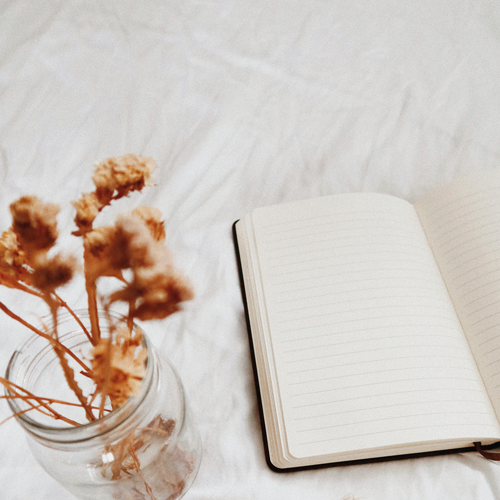Different ways to fill empty journals: part 1
/@ dreaming by dusk
So, it’s that time of the year when the pages are starting to become fewer and fewer in my bullet journal. When that happens, I run along to my favourite stationery store, wishing, wishing, that I will find a new journal for a decent price. And I did.
I love when $17 journals turn into $5 journals… It’s one of the best deals when you’re a journal enthusiast. The downside of that deal is I also end up buying more journals than I need. It’s in my nature! I can’t help it.
Now, My collection of empty journals has grown so much in the last months, and I’m starting to wonder what to do with them. There are so many different ways of journaling, writing, or creating on paper. I thought about all the things I could do.
Today, I’m sharing three different ways to fill an empty journal or notebook. I’ve talked about this subject briefly in an earlier post, and I’ve decided to go a little more in-depth this time around. Here are three different ways you can write, draw, or create something new in an empty journal.
1. DAILY PLANNER
I love planners. They’re a great addition to your life if you enjoy planning for the day, week, or month in advance; if you love tracking your progress in any goals or activities you’re currently doing. Especially if you like to have a daily record of everything that is happening to you and around you.
Now, you don’t need to buy a dated planner or calendar. Instead, you can use one of your empty notebooks and create your own DIY planner by customizing the pages with ruled/drawn calendars, daily pages, habit trackers, to-do lists, and any goals you might have.
A great layout in your journal for this is a monthly overview, weekly overviews, to-do lists, trackers, and perhaps even daily overviews if you want to write in-depth about your day-to-day activities. Like this, you’re not restricted or limited to the design of a regular planner, dated or undated. You can create your own design for the journal, keep it consistent, or even change it up as you wish.
2. PHOTO ALBUM
Photo albums are a thing of the past, right? Nowadays, it seems more trendy to take your polaroid snaps and stick them up on the wall in your bedroom than inside a dusty, old book that's never opened.
In saying that, I’ve always thought there was something sweet and nostalgic about skimming through the pages of family photo albums. It’s a feeling that’s irreplaceable… At least to me.
You can fill an empty journal by turning it into a photo book or photo album. There are a lot of up-sides to using a journal in this way. First of all, if the pages are ruled, you’ve already got some space to write captions, summaries, memories of the photograph in question.
Similarly, if the pages are blank, you can decorate them with illustrations, collages, and more. Secondly, traditional photo albums, though better equipped to protect your photos, are SO much more expensive if you want to buy one that is of good quality.
A great layout for turning a journal into a photo album is to curate the photographs and arrange them by month, event, or a specific time in your life. Such as seasonal changes, transitional periods in your life, happiest or saddest moments, family holidays, and friend outings. You can even arrange the photos in a timeline sequence as if narrating a story with images.
3. STUDY NOTEBOOK
When you graduate, it doesn’t mean you stop being a student. You still have the motivation, passion, and drive to learn new things. That isn’t something that goes away so easily. If you’re a ‘lifelong student’ it means you’re always encouraging yourself to pursue more, learn more, for the sake of your own personal development.
It should come as no surprise then that another great way to use an empty journal is to turn it into a notebook for studying and writing notes about the topics you learn about. It can be notes about anything you’re passionate about for your own enjoyment and progress. Languages, history, podcast episodes, masterclasses, webinars, YouTube videos, articles or scholarly journals, online classes or workshops, and more.
A great layout for this type of journal is to number the pages and different study topics. Categorise them in a ‘contents’ page so that specific information or subjects are easier to find and skim through. You may even go a step further and create a detailed glossary at the end of the journal. Think of it as your hand-written encyclopedia of topics that are relevant to you.
Related Posts:
FOLLOW ME ON SOCIAL MEDIA FOR MORE COZY, VINTAGE CONTENT













